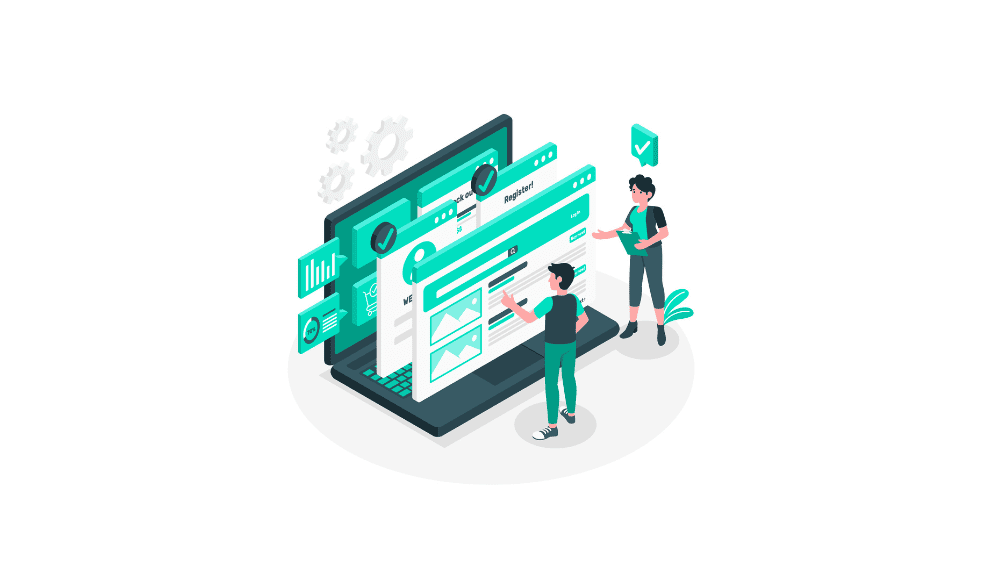What’s Big Data?
Big Data refers to extremely large and complex datasets that traditional data- processing tools can not handle effectively. It’s characterized by vast volume, high haste, and immense variety. Organizations use advanced results to store, manage, and dissect data for bettered decision- timber.
Understanding Data Analytics
In moment’s digital period, massive datasets are transubstantiating diligence, revolutionizing decision- timber, and enhancing business intelligence. Companies influence analytics to prize precious perceptivity, enabling better strategic planning. From Google Big Query to Hadoop, colorful tools help businesses process and dissect data efficiently.
Secure Your Business with Next-Gen Big Data Solutions! Explore Now
Types of Big Data
Big Data is classified into three primary types:
Structured Data: Organized and stored in relational databases such as Big Query Google, SQL, and spreadsheets.
Unstructured Data: Includes emails, images, videos, social media posts, and sensor data from IoT devices—key components of Big Data.
Semi-structured Data: Data with some organization, such as XML, JSON, and log files, often processed using Big Data platforms.
Characteristics of Big Data (5Vs of Big Data)
Understanding the 5Vs of Big Data helps businesses harness its full potential:
Volume: Companies generate Big Data in petabytes daily through social media, IoT, and business transactions.
Velocity: Real-time processing of Big Data is essential for dynamic decision-making.
Variety: Big Data comes in various formats, including structured, semi-structured, and unstructured.
Veracity: Ensuring accuracy and reliability of Big Data is crucial for meaningful insights.
Value: Extracting valuable insights from Big Data analytics enhances efficiency and profitability.
Big Data Tools & Technologies
The evolution of Big Data technologies has led to advanced data processing and analytics solutions. Some of the most popular Big Data tools include:
Hadoop Big Data: Open-source framework that distributes large Big Data datasets across multiple nodes.
Google Cloud Big Query: Serverless Big Data warehouse for fast SQL-based analytics.
Spark Big Data: Enables in-memory computing for accelerated Big Data processing.
Big Data AI tools: AI-driven analytics enhance Big Data intelligence for decision-making.
Big Data visualization tools: Convert complex Big Data sets into interactive dashboards for business intelligence.
Big Data Analytics: Transforming Industries
Organizations leverage Big Data analytics to gain a competitive edge. Big Data analytics in healthcare, finance, marketing, and cybersecurity is driving efficiency and innovation.
Big Data in Healthcare Industry: AI-driven insights from Big Data help detect diseases early and improve patient care.
Big Data in Marketing: Personalization and predictive analytics in Big Data enhance customer engagement.
Big Data and Business Analytics: Companies optimize supply chain management and fraud detection through Big Data.
Big Data and Data Science: Data scientists use Big Data AI to develop machine learning models for predictive analytics.
Transform Your Data Strategy with AI-Driven Insights! Learn More
The Synergy Between Big Data and Artificial Intelligence (AI)
The integration of Big Data and Artificial Intelligence (AI) is revolutionizing industries by enhancing automation, predictive analytics, and data-driven decision-making. AI-driven Big Data analytics plays a critical role in detecting anomalies, forecasting trends, and analyzing customer behavior, enabling businesses to optimize their strategies effectively.
Key Applications of Big Data and AI
Big Data and Predictive Analytics
AI models leverage Big Data and Artificial Intelligence (AI) to analyze past datasets, predict future trends, and optimize decision-making processes. Predictive analytics enhances risk management, financial forecasting, and customer behavior modeling.
Big Data and Cloud Computing
Cloud platforms like Google Cloud Big Query provide scalable and efficient solutions for storing and processing Big Data and Artificial Intelligence (AI) workloads. This combination helps businesses handle vast amounts of data while minimizing infrastructure costs.
Big Data and IoT
The integration of Big Data and Artificial Intelligence (AI) with IoT enables smart automation in various sectors, including industrial applications and smart city management. AI-driven analytics help in real-time monitoring and automated decision-making.
Big Data Business Analytics
Organizations use Big Data and Artificial Intelligence (AI) to gain deeper customer insights, enhancing marketing strategies, sales forecasting, and personalized customer experiences. AI-powered business analytics tools allow enterprises to extract meaningful patterns from vast datasets.
Big Data Applications Across Industries
Big Data in Cloud Computing
Cloud platforms such as Google Cloud Big Query facilitate scalable Big Data and Artificial Intelligence (AI) solutions, reducing operational costs while improving efficiency. Real-time data processing ensures businesses can react swiftly to market changes.
Big Data in Finance
Financial institutions utilize Big Data and Artificial Intelligence (AI) for fraud detection, risk assessment, and customer segmentation. Predictive analytics enhances personalized banking services and optimizes investment strategies.
Big Data in Retail
Retailers leverage Big Data and Artificial Intelligence (AI) for inventory management, demand forecasting, and tailored customer engagement. AI-driven analytics refine pricing strategies and improve the supply chain.
Big Data in Cybersecurity
Organizations implement Big Data and Artificial Intelligence (AI) strategies to detect security threats, prevent data breaches, and comply with regulations like GDPR. AI-driven anomaly detection helps in identifying suspicious activities in real-time.
Big Data and Cloud Computing: The Perfect Match
The rise of cloud and Big Data has led businesses to adopt serverless architectures, allowing scalable and cost-effective data storage and processing. Big Query SQL is a widely used tool for real-time Big Data cloud computing analytics.
Advantages of Cloud-Based Big Data Solutions
Cost-effective storage: Pay-as-you-go pricing optimizes Big Query cost.
Real-time analytics: AI-driven insights with Big Query ML.
Scalability: Elastic computing resources handle fluctuating workloads.
Security: Advanced encryption and compliance measures protect Big Data and security.
Security Challenges in Big Data
Handling massive data analytics comes with risks, including:
Data breaches: Cybercriminals target valuable Big Data datasets.
Compliance challenges: Businesses must comply with strict data protection laws.
Infrastructure vulnerabilities: Big Data processing demands robust security frameworks.
Future of Big Data and AI: What’s Next?
The future of Big Data and Artificial Intelligence (AI) is promising, with advancements in Big Data platforms, real-time analytics, and AI-driven automation. Businesses will increasingly rely on Big Data and AI to streamline decision-making and optimize operations.
Emerging Trends in Big Data
Real-time AI analytics: Faster, more efficient business decision-making.
Big Data and IoT Integration: Smarter automation and improved data processing.
Data governance: Enhanced compliance measures for better Big Data management.
5Vs of Big Data Expansion: Emphasizing Volume, Velocity, Variety, Veracity, and Value to maximize data utilization.
Conclusion
The continued adoption of Big Data and Artificial Intelligence (AI) is transforming industries. Leveraging Big Data analytics tools like Hadoop Big Data, Google Cloud Big Query, and Spark Big Data will be essential for business growth. The synergy between Big Data and AI will unlock new opportunities, making data-driven decision-making a fundamental aspect of modern enterprises.
Stay ahead in the data revolution! Learn more from industry experts.




